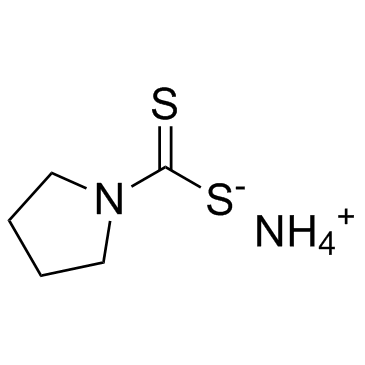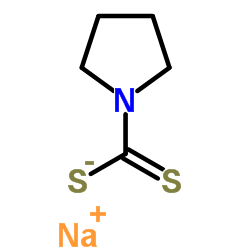| Structure | Name/CAS No. | Articles |
|---|---|---|
 |
Ammonium 1-pyrrolidinedithiocarbamate
CAS:5108-96-3 |
|
 |
Sodium 1-pyrrolidinecarbodithioate
CAS:872-71-9 |